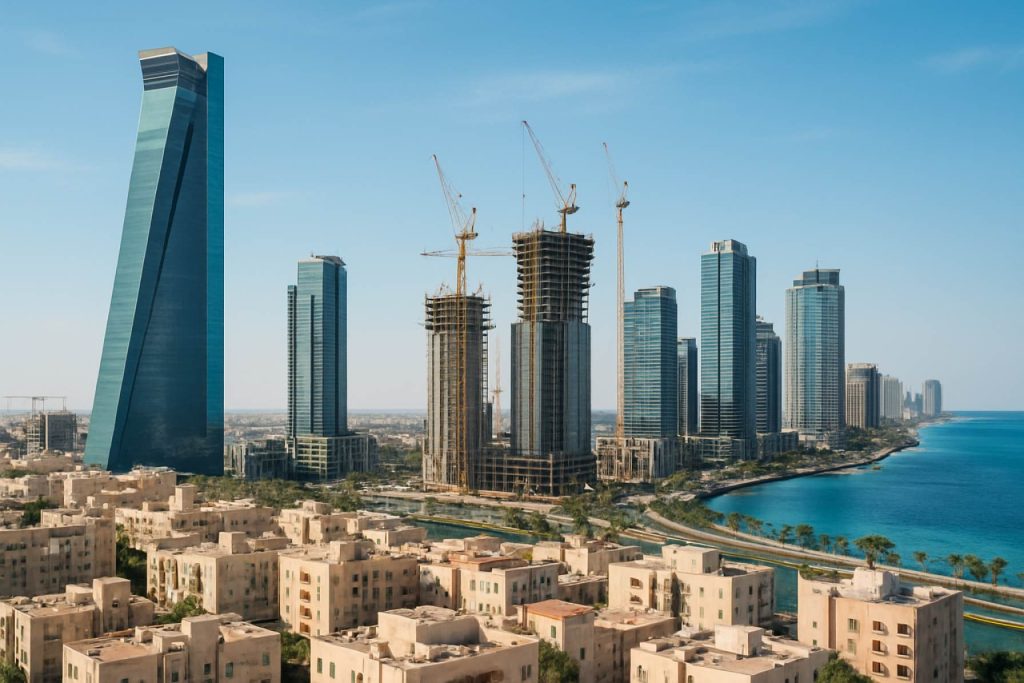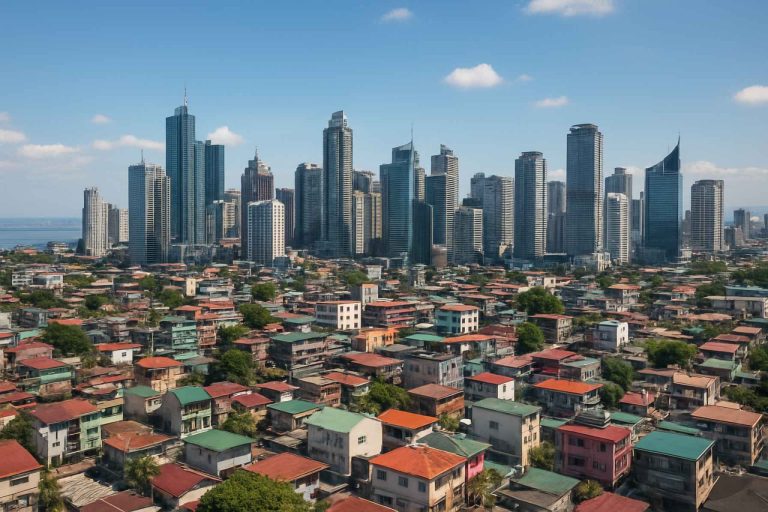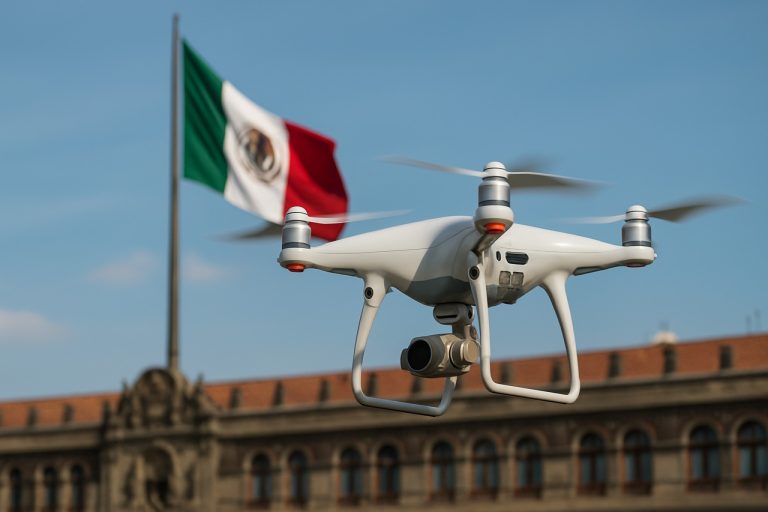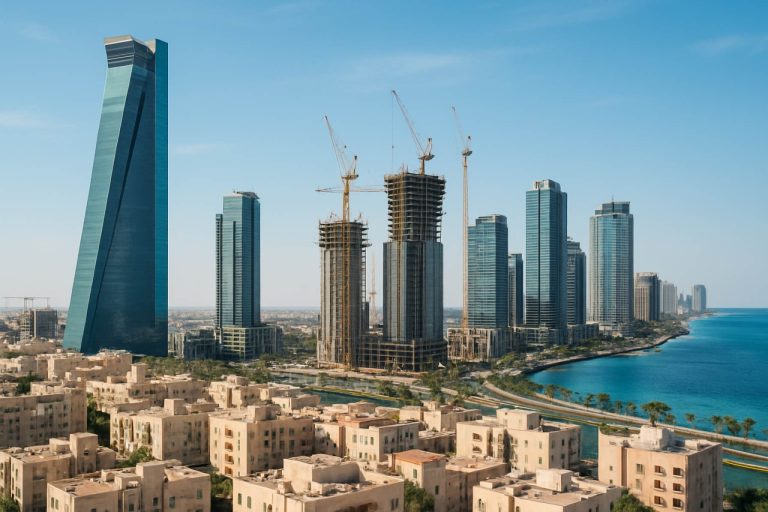
Comprehensive Analysis of Jeddah’s Real Estate Evolution: Key Trends, Vision 2030 Influence, and Strategic Forecasts
- Market Overview
- Technology Trends Shaping Real Estate
- Competitive Landscape and Key Players
- Growth Forecasts and Investment Potential
- Regional Analysis and Submarket Highlights
- Future Outlook and Strategic Directions
- Challenges and Opportunities Ahead
- Sources & References
“Jeddah’s real estate market is entering 2025 on a strong footing, buoyed by robust demand and government-led initiatives under Saudi Vision 2030.” (source)
Market Overview
The Jeddah real estate market is poised for significant transformation as it heads into 2025, driven by Saudi Arabia’s Vision 2030 and robust economic reforms. As the Kingdom’s commercial hub and gateway to the holy cities, Jeddah is experiencing a surge in both residential and commercial developments, underpinned by government initiatives and private sector investments.
Key Trends Shaping the Market
- Residential Demand: The demand for residential properties in Jeddah continues to rise, fueled by population growth, urbanization, and government-backed housing programs. According to Knight Frank, apartment prices in Jeddah increased by 7% year-on-year in Q3 2023, while villa prices rose by 4%.
- Commercial Expansion: The commercial sector is witnessing renewed interest, particularly in office and retail spaces, as business activity rebounds post-pandemic. The JLL Q4 2023 report notes a 5% annual increase in office rents, reflecting strong demand from local and international firms.
- Tourism & Hospitality: Jeddah’s strategic location and the government’s focus on tourism—especially with the Jeddah Central and Jeddah Waterfront projects—are expected to boost the hospitality sector. The city aims to attract 30 million visitors annually by 2030 (SPA).
- Vision 2030 Impact: Vision 2030’s emphasis on economic diversification, infrastructure upgrades, and quality of life improvements is catalyzing real estate activity. Mega-projects like Jeddah Central (formerly New Jeddah Downtown) and the Red Sea Project are set to redefine the city’s urban landscape (Red Sea Global).
Forecast to 2030
- Jeddah’s real estate market is projected to grow at a CAGR of 6-8% through 2030, with residential and hospitality segments leading the expansion (Mordor Intelligence).
- Ongoing regulatory reforms, such as the Real Estate General Authority’s digitalization efforts, are expected to enhance transparency and investor confidence.
- Challenges remain, including affordability concerns and the need for sustainable development, but the overall outlook remains positive as Vision 2030 initiatives gain momentum.
In summary, Jeddah’s real estate market is on an upward trajectory, supported by strong fundamentals, visionary government policies, and a clear roadmap for growth through 2030.
Technology Trends Shaping Real Estate
The Jeddah real estate market is poised for significant transformation as it heads into 2025, driven by Saudi Arabia’s Vision 2030 and rapid technological adoption. As the Kingdom’s commercial hub and gateway to the Red Sea, Jeddah is experiencing a surge in both residential and commercial developments, underpinned by government reforms and a focus on digital innovation.
- Vision 2030 and Regulatory Reforms: Saudi Arabia’s Vision 2030 aims to diversify the economy and increase private sector participation. In Jeddah, this has translated into streamlined property ownership regulations, increased transparency, and the introduction of Real Estate Investment Trusts (REITs). The Saudi Arabian General Investment Authority reports a steady rise in foreign investment, with Jeddah positioned as a key beneficiary.
- Smart Cities and Proptech: The adoption of smart city technologies is accelerating. Jeddah’s urban planning now incorporates IoT-enabled infrastructure, digital building management, and AI-driven property analytics. According to Knight Frank, proptech solutions are streamlining transactions and enhancing tenant experiences, with virtual tours and blockchain-based contracts gaining traction.
- Residential and Commercial Demand: The demand for high-quality residential units is rising, fueled by a young, growing population and government-backed housing initiatives. The JLL Q1 2024 report highlights a 5% year-on-year increase in residential supply in Jeddah, with luxury and mixed-use developments leading the way. On the commercial side, the city’s strategic location is attracting logistics, retail, and hospitality investments.
- Forecast to 2030: Looking ahead, Jeddah’s real estate market is expected to maintain robust growth. The PwC Middle East forecast anticipates continued expansion in both residential and commercial sectors, supported by mega-projects such as Jeddah Central and the Red Sea Project. Technology will remain a key enabler, with digital platforms, data analytics, and sustainable building practices shaping the market’s evolution.
In summary, Jeddah’s real estate outlook for 2025 and beyond is characterized by innovation, regulatory support, and alignment with Vision 2030. Stakeholders who embrace technology and sustainability are likely to benefit most from the city’s dynamic growth trajectory.
Competitive Landscape and Key Players
The Jeddah real estate market is poised for significant transformation as it heads into 2025, driven by Saudi Arabia’s Vision 2030 and robust economic reforms. The competitive landscape is evolving rapidly, with both local and international players intensifying their presence across residential, commercial, and hospitality segments.
Key Trends Shaping the Market
- Vision 2030 Initiatives: The government’s focus on diversifying the economy and enhancing urban infrastructure is spurring large-scale developments in Jeddah. Projects like the Jeddah Central Development and King Abdullah Economic City are attracting significant investment and reshaping the city’s skyline.
- Residential Demand: Population growth and a young demographic are fueling demand for affordable and mid-market housing. According to Knight Frank, residential prices in Jeddah rose by 5% year-on-year in 2023, with further growth expected as new supply enters the market.
- Commercial and Retail Expansion: The retail and office sectors are witnessing renewed interest, with international brands and businesses establishing a foothold. The hospitality sector is also booming, supported by tourism initiatives and mega-events.
Key Players and Competitive Dynamics
- Emaar, The Economic City: Developer of King Abdullah Economic City, Emaar is a major force in mixed-use and residential projects, leveraging international expertise and capital.
- Jeddah Central Development Company: Backed by the Public Investment Fund (PIF), this entity is spearheading the $20 billion Jeddah Central project, which will deliver thousands of residential units, hotels, and commercial spaces by 2030 (Arab News).
- Al Akaria Saudi Real Estate Company: A leading local developer, Al Akaria is expanding its portfolio in Jeddah, focusing on integrated communities and commercial assets.
- International Entrants: Global firms such as Savills and JLL are increasing advisory and management activities, reflecting growing foreign interest and expertise in the market.
Looking ahead to 2030, the Jeddah real estate market is expected to remain highly competitive, with government-backed megaprojects, private sector innovation, and international partnerships driving growth and diversification.
Growth Forecasts and Investment Potential
The Jeddah real estate market is poised for significant transformation as Saudi Arabia accelerates its Vision 2030 agenda, with 2025 expected to mark a pivotal year for growth and investment. The city, a commercial hub and gateway to the holy cities, is witnessing robust demand across residential, commercial, and hospitality sectors, driven by population growth, infrastructure upgrades, and regulatory reforms.
- Market Growth Projections: According to Knight Frank, Jeddah’s real estate market is forecast to grow at a compound annual growth rate (CAGR) of 5-7% through 2030, with the residential sector leading the expansion. The city’s population is expected to surpass 5 million by 2030, fueling demand for new housing and mixed-use developments.
- Vision 2030 Initiatives: The Saudi government’s Vision 2030 plan is a key catalyst, with projects such as the Jeddah Central Development and waterfront revitalization attracting both local and international investors. The Jeddah Central Project, valued at $20 billion, aims to deliver 17,000 residential units, hotels, and commercial spaces by 2030, significantly enhancing the city’s urban landscape.
- Investment Potential: Foreign direct investment (FDI) in Saudi real estate surged by 20% in 2023, according to SAGIA, with Jeddah emerging as a top destination due to its strategic location and business-friendly reforms. The introduction of new ownership laws and streamlined licensing processes are expected to further boost investor confidence in 2025 and beyond.
- Key Trends for 2025: The market is shifting towards sustainable and smart developments, with increased emphasis on green building standards and digital infrastructure. Demand for luxury and branded residences is rising, while the hospitality sector is set to benefit from growing religious and leisure tourism, especially with the expansion of King Abdulaziz International Airport.
In summary, Jeddah’s real estate market outlook for 2025 is highly optimistic, underpinned by Vision 2030 initiatives, strong demographic trends, and a favorable investment climate. Investors and developers are well-positioned to capitalize on the city’s transformation, with sustained growth expected through 2030.
Regional Analysis and Submarket Highlights
The Jeddah real estate market is poised for significant transformation in 2025, driven by Saudi Arabia’s Vision 2030 and robust economic reforms. As the Kingdom’s commercial hub and gateway to the holy cities, Jeddah is witnessing a surge in both residential and commercial developments, underpinned by government initiatives and private sector investments.
- Residential Sector: Demand for housing in Jeddah continues to rise, fueled by population growth and urbanization. The Ministry of Municipal and Rural Affairs and Housing reported a 12% year-on-year increase in residential transactions in 2023, with this momentum expected to carry into 2025 (Saudi Gazette). Affordable housing projects and luxury developments are both expanding, with the government’s Sakani program aiming to deliver over 300,000 new homes nationwide by 2025.
- Commercial & Retail Submarkets: The commercial real estate sector is benefiting from Jeddah’s strategic location and the government’s push to diversify the economy. Office space demand is rising, particularly in the King Abdullah Economic City (KAEC) and the Jeddah Central Project, which is set to attract over SAR 75 billion ($20 billion) in investments by 2030 (Arab News). Retail is also rebounding, with new malls and mixed-use developments catering to evolving consumer preferences.
- Hospitality & Tourism: Vision 2030’s focus on tourism is catalyzing hotel and leisure property growth. Jeddah’s Red Sea coastline and proximity to religious sites are attracting international hotel brands and investors. The city’s hospitality pipeline includes over 5,000 new hotel rooms by 2025, supporting the goal of 100 million annual visitors to Saudi Arabia by 2030 (Zawya).
Looking ahead, Jeddah’s real estate market is forecast to grow at a CAGR of 6-8% through 2030, with Vision 2030 projects, infrastructure upgrades, and regulatory reforms enhancing investor confidence. The city’s transformation into a global business and tourism destination is expected to sustain demand across all submarkets, making Jeddah a focal point for real estate growth in the Kingdom.
Future Outlook and Strategic Directions
The Jeddah real estate market is poised for significant transformation as it heads into 2025, driven by Saudi Arabia’s Vision 2030 and robust economic reforms. The government’s ongoing efforts to diversify the economy away from oil, coupled with large-scale infrastructure projects, are expected to reshape the city’s property landscape and attract both local and international investors.
Key Trends Shaping 2025
- Residential Demand: The demand for residential units is projected to rise, fueled by a growing population and government initiatives to increase homeownership. The Ministry of Housing’s Sakani program continues to provide affordable housing, with over 300,000 units delivered nationwide in 2023 (Sakani).
- Commercial Expansion: Jeddah’s strategic location as a commercial hub is attracting new business districts and mixed-use developments. The Jeddah Central Project, a $20 billion waterfront development, is set to deliver 17,000 residential units and 2,700 hotel rooms by 2030 (Jeddah Central Development Company).
- Tourism and Hospitality: With the easing of visa regulations and a focus on tourism, hotel occupancy rates are expected to climb. The city’s hospitality sector saw a 15% year-on-year increase in RevPAR in 2023 (Colliers).
- Sustainability and Smart Cities: Vision 2030 emphasizes sustainable urban development. New projects are integrating green spaces, smart infrastructure, and energy-efficient designs, aligning with global ESG standards (Vision 2030).
Forecast to 2030
- Market Growth: The Jeddah real estate market is forecast to grow at a CAGR of 6-8% through 2030, with residential and hospitality segments leading the expansion (Knight Frank).
- Foreign Investment: Regulatory reforms and 100% foreign ownership in certain sectors are expected to boost FDI inflows, particularly in commercial and mixed-use developments (Invest Saudi).
- Strategic Directions: The focus will remain on affordable housing, luxury developments, and infrastructure upgrades, including the Jeddah Metro and airport expansion, to support urban growth and connectivity.
In summary, Jeddah’s real estate market is set for robust growth through 2025 and beyond, underpinned by Vision 2030’s ambitious goals, demographic trends, and strategic investments in infrastructure and sustainability.
Challenges and Opportunities Ahead
The Jeddah real estate market stands at a pivotal juncture as it approaches 2025, shaped by ambitious national reforms, evolving demand, and global economic headwinds. The Saudi government’s Vision 2030 continues to drive transformation, aiming to diversify the economy and boost the real estate sector through mega-projects and regulatory reforms. However, the market faces both significant challenges and promising opportunities as it looks toward 2030.
-
Challenges:
- Supply-Demand Imbalance: Despite a surge in residential and commercial developments, oversupply in certain segments—particularly luxury apartments—has led to downward pressure on prices and occupancy rates. According to JLL, Jeddah’s residential market saw a 2% year-on-year decline in apartment prices in Q1 2024.
- Affordability Concerns: Rising construction costs and inflation have made homeownership less accessible for middle-income Saudis, despite government-backed mortgage initiatives. The Saudi Central Bank reported a slowdown in new residential mortgage growth in early 2024.
- Regulatory Adjustments: Ongoing changes in land use regulations and foreign ownership laws create uncertainty for investors, though they are intended to foster transparency and long-term stability.
-
Opportunities:
- Vision 2030 Mega-Projects: Initiatives such as the Red Sea Project and Jeddah Central Development are set to transform the city’s landscape, attracting international investors and boosting tourism-related real estate.
- Growing Demand for Mixed-Use Developments: There is increasing appetite for integrated communities that combine residential, retail, and leisure spaces, aligning with changing lifestyle preferences and urbanization trends.
- Technological Innovation: Proptech adoption and smart city initiatives are expected to enhance efficiency, transparency, and sustainability in the sector, supported by government digitalization efforts.
Looking ahead, the Jeddah real estate market is forecast to gradually recover, with Knight Frank projecting steady growth in demand for affordable housing and hospitality assets through 2030. Success will depend on balancing supply, improving affordability, and leveraging Vision 2030’s momentum to create a resilient, investor-friendly market.
Sources & References
- Jeddah Real Estate Market 2025 Outlook: Trends, Vision 2030 & Forecast to 2030
- Knight Frank
- JLL
- Jeddah Central Project
- Mordor Intelligence
- PwC Middle East
- Jeddah Central Development Company
- Arab News
- Savills
- Saudi Gazette
- Saudi Central Bank



